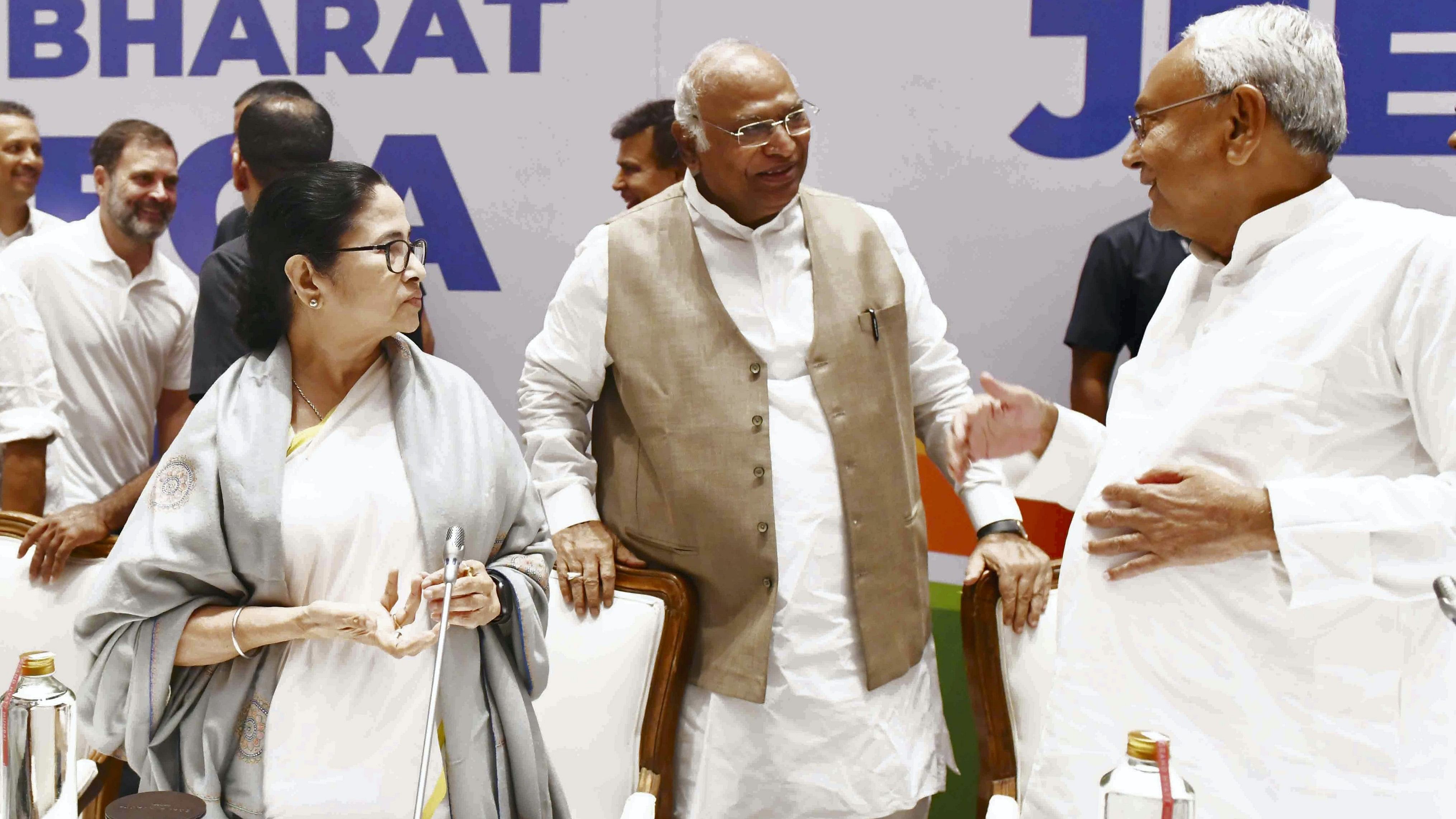
File Photo: Congress President Mallikarjun Kharge, West Bengal CM and TMC supremo Mamata Banerjee and Bihar CM Nitish Kumar during an I.N.D.I.A alliance meeting.
Credit: PTI Photo
New Delhi: With Mallikarjun Kharge and Nitish Kumar emerging as the top choice for the posts of chairperson and convenor of the I.N.D.I.A alliance, Opposition parties have sought to stitch a Dalit-backward, north-south combo to counter Narendra Modi’s pan-India appeal in the 2024 Lok Sabha polls.
The move also attempts to fend off the BJP’s build-up against dynastic politics by ring-fencing the Gandhis and other powerful political families who hold the reins of other regional parties in the alliance.
In projecting Kharge, the Congress seems to have made its intentions clear: that the major thrust of its campaign to mop up seats in the next Lok Sabha would be the south of the Vindhyas.
The conventional Dalit-Muslim-Tribal combination clicked for the party in two Assembly polls last year.
If the backward classes join the social coalition, as was the case in Karnataka, the returns are handsome. In Telangana, where the backward mobilisation was limited, the Congress barely scraped through but managed to form the government by bagging 23 out of 31 reserved seats.
If Kharge is formally anointed as the chairperson, I.N.D.I.A parties would attempt to stretch the impact of the political messaging around his projection up north, especially in states like Maharashtra, which have a history of strong Dalit mobilisation as Prakash Ambedkar joins the alliance.
“Kharge’s politics has been guided by the ideology of Ambedkar and Buddhism. He had pursued the policy of socially inclusive development making growth pro-poor, labour and towards marginalised sections,” said Prof. Sukhdeo Thorat, editor of Kharge’s recently published biography.
The question is whether the Congress would want to use Kharge’s appeal, especially among the Dalits in the Hindi heartland states, and in UP in particular, if Mayawati decides to go solo.
India has never had a Dalit prime minister, though the community comprises almost 16% of the country’s population. One out of every fifth voter in UP and one out of every third voter in Punjab is a Dalit.
Bihar Chief Minister Nitish Kumar, on the other hand, remains non-committal on accepting a joint-leadership position. But he is a critical cog in the wheel for the Opposition in the Hindi-speaking belt as he belongs to a backward community that is spread across the north and west.
Despite being in power for almost two decades now in Bihar, there is no corruption stain on him. And finally, unlike other Mandal parties, the BJP will find it difficult to attack him for promoting nepotism and dynastic politics.